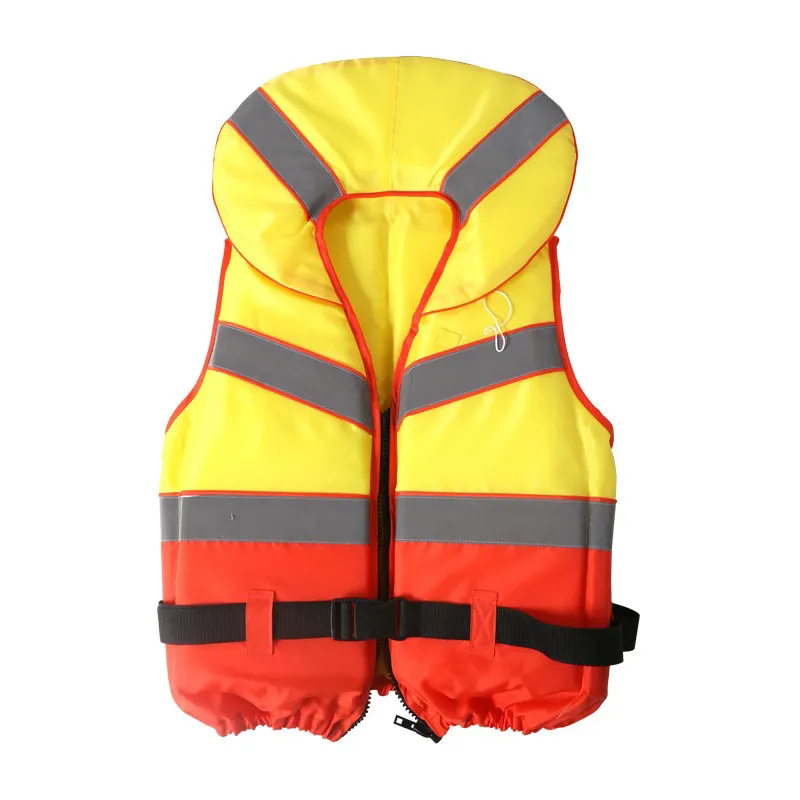Information about Mairne Life Jackets
2024-07-27
A marine life jacket, also known as a life vest or personal flotation device (PFD), is essential safety equipment designed to keep individuals afloat in the water. They are crucial for boating, sailing, kayaking, and other water activities. Here's a detailed overview of marine life jackets:
Key Features:
1. Buoyancy: Life jackets are designed to provide enough buoyancy to keep the wearer's head above water.
2. Visibility: Often brightly colored with reflective strips to increase visibility in the water.
3. Material: Made from durable, water-resistant materials such as nylon or polyester, with foam or inflatable chambers for buoyancy.
4. Fit: Available in various sizes to fit different body types, with adjustable straps for a secure fit.
5. Comfort: Designed to be worn for extended periods, many have features for added comfort like padded straps and breathable fabrics.
Types of Marine Life Jackets:
1. Type I (Offshore Life Jackets): Provides the most buoyancy (22 lbs for adults) and is designed for open, rough, or remote waters where rescue may be delayed. These jackets are highly visible and can turn an unconscious person face-up.
2. Type II (Near-Shore Buoyant Vests): Suitable for calm, inland waters where quick rescue is likely. They provide less buoyancy (15.5 lbs for adults) and are less likely to turn an unconscious person face-up.
3. Type III (Flotation Aids): Ideal for general boating or specialized activities like kayaking. They provide the same buoyancy as Type II but are more comfortable for extended wear. They do not turn an unconscious person face-up.
4. Type IV (Throwable Devices): Not wearable, these are cushions or rings that can be thrown to a person in the water.
5. Type V (Special Use Devices): Designed for specific activities like windsurfing, kayaking, or waterskiing. They must be worn to be effective and may have specific use restrictions.
Regulations and Standards:
- US Coast Guard (USCG): Life jackets used in the U.S. must be approved by the USCG, which ensures they meet safety standards.
- International Standards: Many countries have their own standards, such as the European ISO 12402 standard.
Usage and Maintenance:
1. Proper Fit: Ensure the life jacket fits snugly but comfortably. Adjust straps as needed.
2. Regular Inspection: Check for wear and tear, including rips, punctures, and damaged buckles or straps. Ensure the buoyant material is not compressed or damaged.
3. Storage: Store life jackets in a cool, dry place away from direct sunlight and chemicals to prevent degradation.
4. Inflatable Life Jackets: Check the CO2 cartridge and inflator mechanism regularly. Ensure manual and automatic inflation mechanisms are functional.
Benefits:
1. Safety: Life jackets save lives by providing buoyancy and keeping the wearer's head above water.
2. Peace of Mind: Knowing you have safety equipment can increase confidence and enjoyment of water activities.
3. Compliance: Many jurisdictions require life jackets to be worn or carried on board, ensuring legal compliance.
Selecting a Life Jacket:
- Activity Type: Choose a life jacket designed for the specific water activity.
- Size and Weight: Ensure the life jacket is appropriate for the wearer's size and weight.
- Comfort and Mobility: Look for features that enhance comfort and allow for a full range of motion.
- Visibility: Opt for brightly colored jackets with reflective materials for increased safety.
Marine life jackets are a critical component of water safety. Selecting the right type and ensuring proper usage can significantly enhance safety during water activities.



